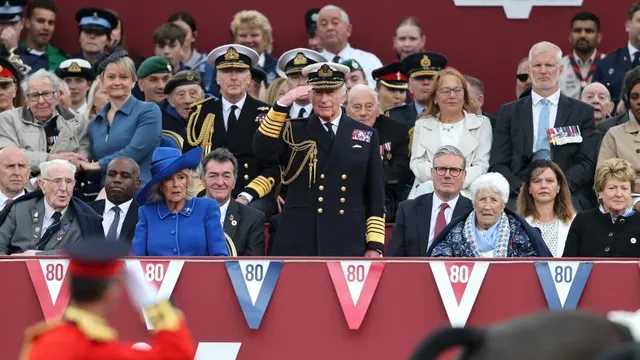
London remembers Victory in Europe Day with heartfelt celebrations
2025-05-05 12:07- Victory in Europe Day was celebrated on May 8, 1945, in London, marking the end of World War II in Europe.
- John Goldsmith recalls the stark contrast between the hardships of war and the joy of newfound freedom during the celebrations.
- The day symbolizes the resilience of the British people and the importance of collective efforts in achieving victory.
Express your sentiment!
Insights
In the aftermath of World War II, London commemorated Victory in Europe Day on May 8, 1945, marking the formal surrender of Nazi Germany to Allied forces. This day represented a significant turning point for a city that had endured six long years of conflict, including extensive bombing raids that resulted in the loss of approximately 30,000 civilian lives. John Goldsmith, a Londoner who was a child during the war, shared his memories of the emotional celebrations that ensued, highlighting a sharp contrast between the tension of wartime and the euphoria of newfound freedom. The announcement of the victory at 3 p.m. by Prime Minister Winston Churchill galvanized a nation that longed for peace. Goldsmith recalled that even though communities were still recovering from severe rationing and blackouts, the streets were filled with joy, street parties, and celebrations, as people came together to recognize the sacrifices made for their freedom. Churchill's speech emphasized that the victory belonged not to any political party but to the entire British public, reinforcing the shared effort in the fight against tyranny. Goldsmith's reflections also pointed to the anticipation of the return of loved ones who had fought abroad, encapsulating the hope that life could soon return to normalcy. Events during the celebrations included parades, public gatherings, and visits from royals who shared in the jubilation of their subjects. There were moments of remembrance for those who lost their lives during the war, alongside a collective sense of relief and resilience that had emerged from years of struggle. As Britain commemorates the 80th anniversary of this pivotal day, the memories and narratives of individuals like John Goldsmith serve as vital reminders of the cost of war and the importance of peace. With current geopolitical tensions creating rifts between Europe and the United States, the legacy of unity fostered during World War II remains crucial in continuing to build and reinforce transatlantic ties.
Contexts
World War II had a profound and lasting impact on London, affecting its infrastructure, population, and cultural landscape. The city's strategic significance made it a prime target for enemy bombing during the Blitz, which began in September 1940. Over the course of the war, London faced extensive air raids that resulted in significant destruction. Iconic structures, including St. Paul's Cathedral and the Houses of Parliament, suffered damage, but many were ultimately preserved, symbolizing resilience amidst adversity. The physical scars left by the bombings were evident in the decrepit buildings and the need for widespread rebuilding, but the war also prompted innovative approaches to urban planning and architecture in the post-war era. The impact of World War II was not solely physical; the social fabric of London was also deeply affected. The loss of life was staggering, with thousands of civilians perishing in bombings and military service. The war brought about demographic changes, with displacement as families evacuated to the countryside and later returned to a city under reconstruction. The experiences of wartime fostered a sense of unity among Londoners, leading to increased community solidarity and activism. Women played crucial roles during the war effort, taking on jobs traditionally held by men, which began to transform gender roles and expectations in post-war British society. Economically, London faced immense challenges during and after the war. The Blitz and subsequent bombings severely disrupted economic activity, with many businesses forced to close or relocate. The government initiated efforts to support the rebuilding of industry and infrastructure, leading to programs such as the post-war industrial recovery plan. London also experienced food shortages and rationing, which persisted into the immediate post-war period. However, these challenges paved the way for economic changes that encouraged new industries and investments, ultimately leading to renewed growth and modernization in the following decades. Culturally, the legacy of World War II deeply influenced literature, art, and popular media in London. The hardships experienced during the conflict spurred a wave of artistic expression, with writers and artists reflecting on themes of resilience, loss, and identity in their work. The war also served as a catalyst for institutions like the Imperial War Museum, which was established to document and commemorate the experiences of those affected by the conflict. As London emerged from the shadows of war, it became a symbol of hope and endurance, transforming not just the physical landscape but also the spirit of its people, who carried forward the lessons learned from their experiences into the future.